Learn Aggregation and Data Wrangling with Python
Python course with 57 real-time projects - Learn Python
1. Objective
Our previous tutorial, we talked about Python Django. Today in this Data Wrangling tutorial, we will see Python Aggregation and Data Wrangling with Python Programming Language. Moreover, we will discuss prerequisites & reasons to use Data Wrangling with Python. In addition, we discuss Dropping Missing Values, Grouping Data, Filtering Data, Pivoting Dataset, Shifted Datasets, Melted Data, Reducing into an ABT, Concatenating Data, Exporting Data, and Python Aggregate.
So, let’s start Aggregation and Data Wrangling with Python.
2. A Brief on DataFrames
A DataFrame in pandas is a 2-dimensional data structure which holds data in a tabular sense. This means it lets us work in a context of rows and columns.
A dataframe is-
- Mutable.
- Capable of holding columns of different types.
- Capable of performing arithmetic operations on rows and columns.
- A holder of labeled axes for the rows and columns.
This is the DataFrame constructor we have-
pandas.DataFrame (data, index, columns, dtype, copy)
Read about Python Data File Formats – How to Read CSV, JSON, and XLS Files
3. Python Data Wrangling – Prerequisites
a. Python pandas
For aggregation and Data wrangling with Python, you will need the pandas’ library. It helps us with data manipulation and analysis. It has data structures and allows operations that we can use to manipulate numerical tables and time series.
You can install it using the following command-
C:\Users\lifei>pip install pandas
At the time of writing, we use the version 0.23.1 of pandas.
b. Python NumPy
NumPy is another Python library that lets us handle large, multi-dimensional arrays and matrices. It also offers various high-level mathematical functions to help us deal with these.
To install this, you can try the following command in the command prompt-
C:\Users\lifei>pip install numpy
Do you How to Work with NoSQL Database in Python using PyMongo
c. Python DataFrames
For our purpose, we will need two dataframes. We can create a DataFrame using any data type like list, dictionary, or series. We can also use a NumPy and array or another DataFrame to create it. Let’s use a dictionary for now.
>>> one=pandas.DataFrame({
'emp_id':[1,2,3,4,5],
'dept_name':['duvet','bidet','footwear','clothing','electronics'],
'aisle':[1,2,3,4,5]})
>>> first=pandas.DataFrame(one)
>>> two=pandas.DataFrame({
'emp_id':[6,7,8,9,10],
'dept_name':['grocery','toys','laundry','frozen','stationery'],
'aisle':[6,2,2,9,10]})
>>> second=pandas.DataFrame(two)We also create a csv file with utf-8 format in Excel-
We save this as supermarket.csv.
4. Why we need Data Wrangling with Python
Much data obtained from various sources are raw and unusable. This could be messy or incomplete. With data wrangling with Python, we can perform operations on raw data to clean it out to an extent. Wrangling is essential to data science. Let’s take a quick look at it.
5. Dropping Missing Values
As you can see, we have no aisle number for the frozen department in our csv file.
>>> import os
>>> os.chdir('C:\\Users\\lifei\\Desktop')
>>> three=pandas.read_csv('supermarket.csv')
>>> pandas.isnull(three).any()
emp_id False
dept_name False
aisle True
dtype: boolThis shows us that the ‘aisle’ column does have a missing value. The following command shows us the null values in the file-
>>> three.head()
Let’s Revise Python File I/O – Python Write to File and Read File
To drop this record, we use the following command-
>>> three.dropna()
6. Grouping Data
The pandas gorupby() method returns a DataFrameGroupBy object. Calling the method value_counts() returns the number of occurrences for each unique value in the column we specify.
>>> three.groupby('aisle').dept_name.value_counts()This tells us about the correlation between aisle number and department name. This lets us discover trends in data. In situations where we want to see trends by the city, we can group records by their geographical factors.
a. Finding unique values
For this, we can use the unique() method.
>>> two.aisle.unique()
array([ 6, 2, 9, 10], dtype=int64)
b. Length of dataframe
Then len() function gives us the length of the dataframe.
>>> len(two)
5
Do you know How I Used These 5 Steps to Learn Python for Data Science
7. Filtering Data
To gain a subset of data using some criterion, we can filter out parts we need.
a. Single Conditions
>>> two[two['aisle']>3]
>>> two[two['aisle']==2]
b. Multiple Conditions
>>> two[(two['aisle']==2) & (two['dept_name']=='toys')]
Let’s Read about Python Counter – Python Collections Type
c. Describing your Data
>>> (two[(two['aisle']==2) & (two['dept_name']=='toys')]).describe()
d. Filtering through Values
>>> two[two.aisle.isin([2,7,9])]
8. Pivoting Dataset
Pivoting lets us reshape a DataFrame by column/index values. In other words, it produces a pivot table.
>>> (two.pivot(index='emp_id',columns='aisle',values='dept_name')).tail()
Providing a number to this tail() call will give us that many records.
>>> (two.pivot(index='emp_id',columns='aisle',values='dept_name')).tail(3)
a. Shifting a pivoted dataset
We can shift the DataFrame’s index by a certain number of periods using the shift() method.
>>> (two.pivot(index='emp_id',columns='aisle',values='dept_name')).tail(3).shift(1)
Let’s Discuss Python Operator Overloading and Python Magic Methods
9. Melting Shifted Datasets
We can also melt a dataset (unpivot it).
>>> (two.melt(id_vars=['emp_id'],value_name='dept_name')).tail()
10. Merging Melted Data
We can join melted DataFrames into one Analytical Base Table using the merge() function.
>>> melt1=two.melt(id_vars=['emp_id'],value_name='dept_name') >>> melt2=two.melt(id_vars=['emp_id'],value_name='aisle') >>> pandas.merge(melt1,melt2,on=['emp_id']).tail(1)
11. Reducing into an ABT
Finally, to reduce this result into an analytical base table, we do the following:
>>> from functools import reduce >>> base=two[['aisle','dept_name','emp_id']] >>> feature=[base]+[melt1,melt2] >>> abt=reduce(lambda left,right: pandas.merge(left,right,on=['emp_id']),[melt1,melt2]) >>> abt.tail(1)
12. Concatenating Data
We can concatenate datasets along an axis using the concat() method.
>>> pandas.concat([one,two])
Have a look – Lessons on Python Sequences and Collections
13. Exporting Data
Finally, we can export our clean and filtered data to an Excel sheet.
>>> res=pandas.concat([one,two])
>>> res.to_excel('res.xlsx')14. How Python Aggregate Data?
To apply aggregations on our datasets, we can use the Python numpy library along with pandas.
Let’s create a dataframe first.
>>> df=pandas.DataFrame(numpy.random.randn(7,3),
index=pandas.date_range('1/1/2000',periods=7),
columns=['A','B','C'])
>>> print(df)>>> print(df.rolling(window=3,min_periods=1)) Rolling [window=3,min_periods=1,center=False,axis=0]
Let’s explore The Best Article on Python’s Various Libraries
a. Python Aggregating an entire dataframe
We can aggregate an entire dataframe as-
>>> r=df.rolling(window=3,min_periods=1) >>> r.aggregate(numpy.sum)
As you can see, this keeps aggregating the previous value into itself. Another aggregation we can use is max-
>>> r.aggregate(numpy.max)
Other aggregations include mean, median, and min.
b. Python Aggregating one column
To aggregate just one column, we can use its index.
>>> r['B'].aggregate(numpy.mean)
Let’s See the Python Property – The Problem and Solution
c. Python Aggregating multiple columns
We can also specify more than one column to aggregate.
>>> r[['B','C']].aggregate(numpy.sum)
So, this was all about Aggregation and Data Wrangling with Python. Hope you like our explanation.
15. Conclusion
Hence, this was how to clean your data with wrangling and then how to apply aggregations on it. Did we miss out on something in Aggregation and Data Wrangling with Python? Drop your suggestions in the comments.
See Also- List of 63 Python os Modules
For reference
Your opinion matters
Please write your valuable feedback about DataFlair on Google
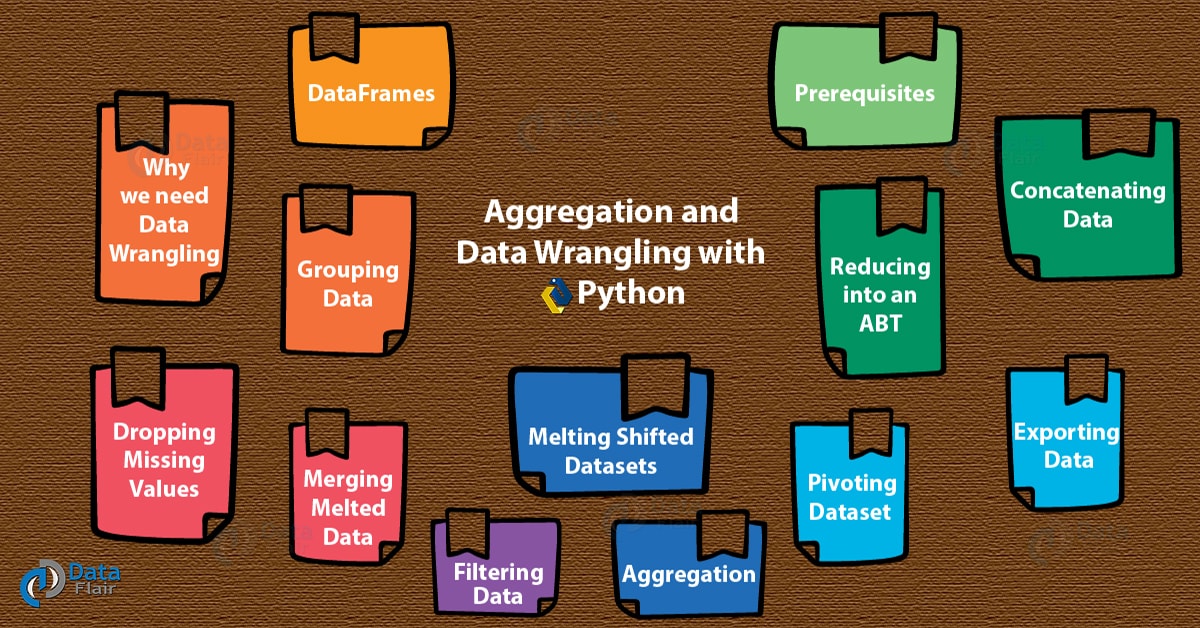




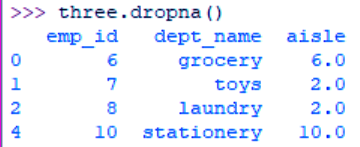





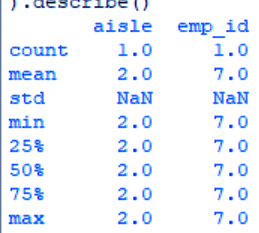








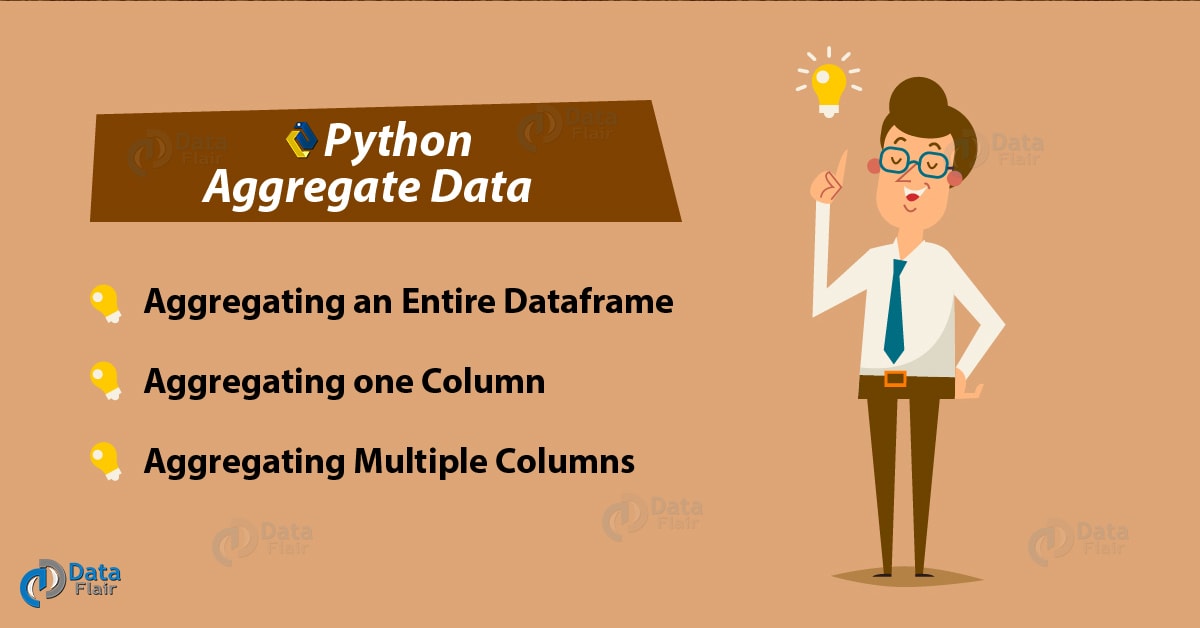
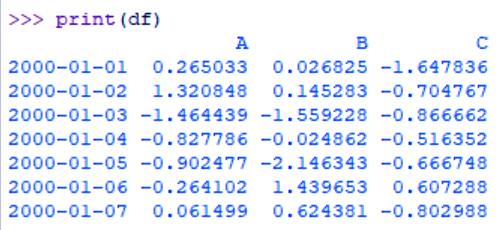
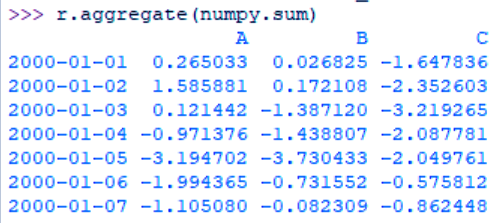
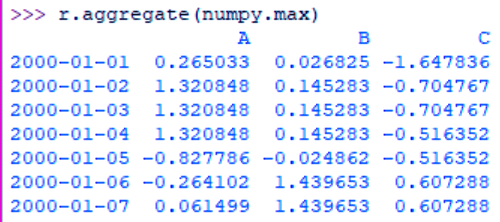
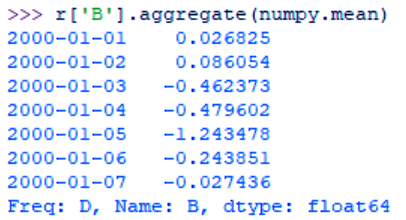



Hi,
Well written and informative post. Your points are clear and easy to understand. Thank you so much for this remarkable piece of content.
Well appreciated, and looking forward to more of such article.
Words Can’t Describe How Grateful We Are For Your Appreciation On “Aggregation and Data Wrangling with Python Tutorial”, We hope you learned How to drop missing Values & group and filter Data while performing – Python Aggregation and Data Wrangling.
You must read Python Stemming and Lemmatization, also related to Aggregation and Data Wrangling with Python Programming.